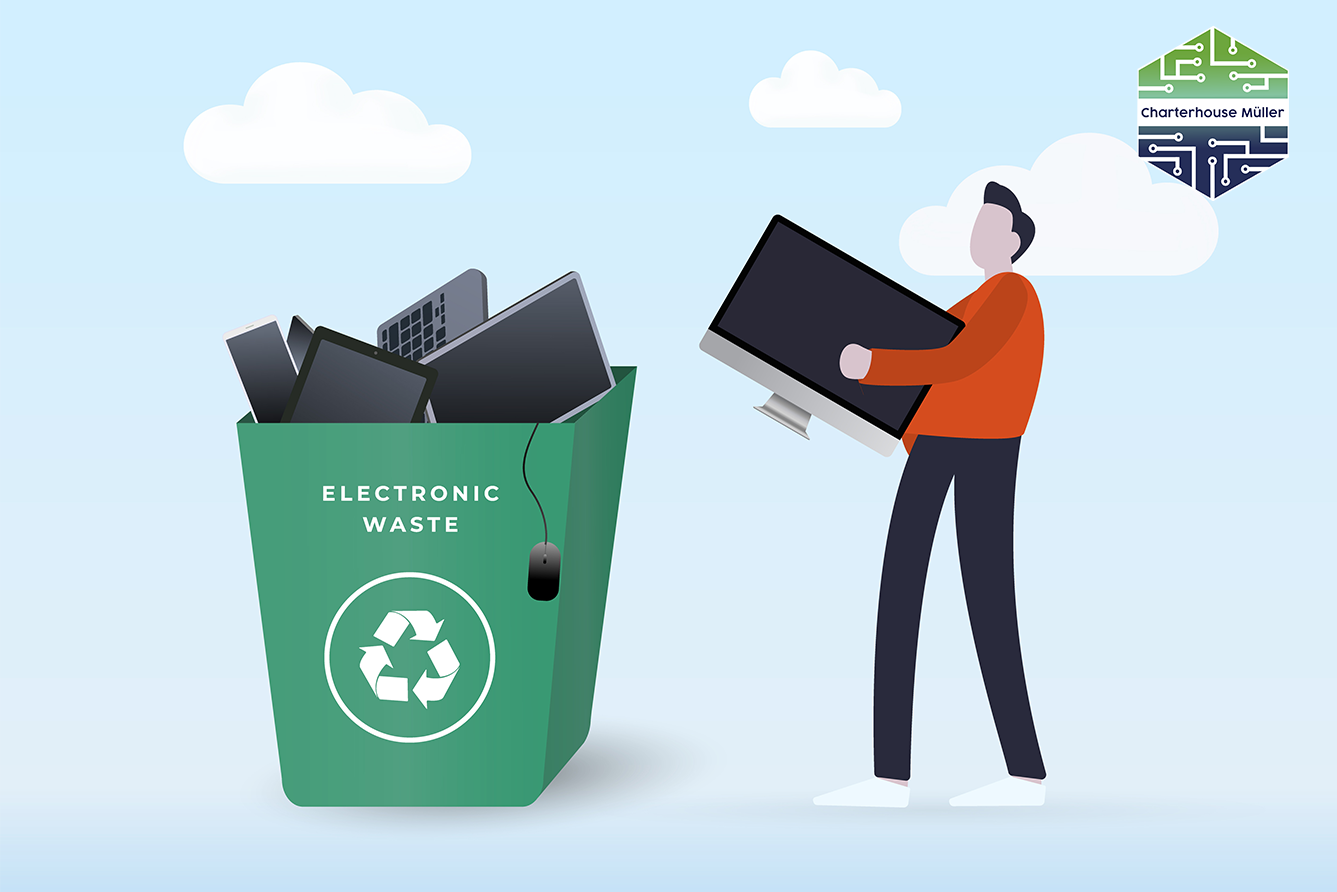
03 Apr The Journey of e-Waste from Discard to Renewal
Technology has brought about remarkable advancements, but it has also left a considerable environmental footprint. Electronic waste or e-waste, presents a significant challenge as our consumption of electronic devices continues to rise. From smartphones to laptops (for example), the disposal of these items demands careful consideration to mitigate their environmental impact. Understanding how e-waste is processed sheds light on the complex journey of recycling and renewal.
Collection:
The journey of e-waste begins with collection. Discarded electronics are gathered from households, businesses and electronic waste drop-off sites. Some countries have designated e-waste collection centres, while others integrate e-waste collection into existing recycling programmes. Efficient collection systems are crucial to divert e-waste from ending up in landfills or being illegally exported to developing countries, where informal recycling processes can lead to environmental and health hazards.
Sorting and Categorisation:
Once collected, e-waste undergoes a meticulous sorting process. Items are categorised based on their material composition, functionality and potential for reuse or recycling. This stage requires skilled labour and advanced technology to identify various components accurately. Devices may contain plastics, metals, glass and precious metals like gold, silver and platinum, each requiring specific treatment methods.
Disassembly:
Disassembly is a critical phase where electronic devices are taken apart to extract valuable components and materials safely and efficiently. Components such as circuit boards, batteries, displays and casings are separated for further processing. Precious metals and rare earth elements found in circuitry are carefully extracted for reuse, minimising the need for new resource extraction.
Processing and Refinement:
Following disassembly, the extracted materials undergo processing and refinement. Metals like aluminium, copper and steel are melted down and purified for reuse in manufacturing. Precious metals are subjected to various chemical processes to separate them from other materials, yielding high-purity metals ready for reintroduction into the production cycle.
Recycling and Reclamation:
Recycling is at the heart of e-waste processing. Once materials are refined, they are ready to be reintroduced into manufacturing processes. Recycled metals, plastics and glass can be used to produce new electronic devices, reducing the demand for virgin resources and the environmental impact of extraction. Additionally, recycling helps conserve energy and reduce greenhouse gas emissions associated with traditional mining and manufacturing processes.
Safe Disposal of Hazardous Materials:
Not all components of e-waste can be easily recycled. Hazardous materials such as lead, mercury for example, require special handling to prevent environmental contamination. These materials are often securely disposed of or treated using specialised processes to render them safe for disposal. Responsible management of hazardous waste is essential to safeguarding both environmental and human health.
Conclusion:
The journey of e-waste from discard to renewal is a multifaceted process that requires careful planning, advanced technology and environmental stewardship. From collection to safe disposal, each stage plays a crucial role in minimising the environmental impact of electronic waste while maximising resource recovery. As society continues to embrace technological innovation, a concerted effort towards sustainable e-waste management is essential to build a greener and more sustainable future. By understanding and supporting the processes involved in e-waste recycling, we can collectively work towards a circular economy where waste is minimised, resources are conserved and the planet thrives.
Speak to us to understand how Charterhouse Muller can make your e-waste journey a smooth process from start to finish.

